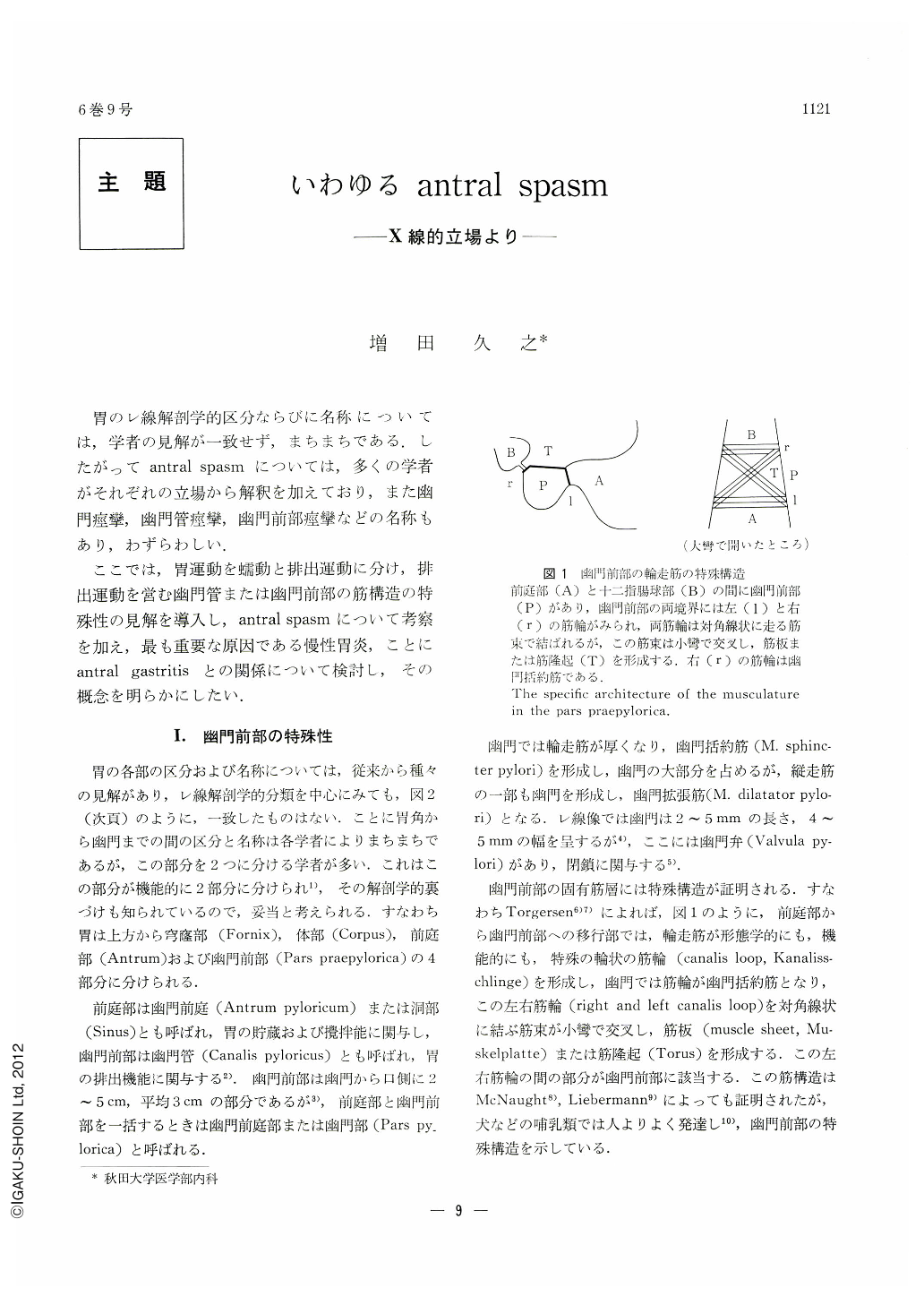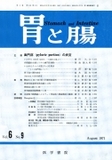Japanese
English
- 有料閲覧
- Abstract 文献概要
- 1ページ目 Look Inside
胃のレ線解剖学的区分ならびに名称については,学者の見解が一致せず,まちまちである.したがってantral spasmについては,多くの学者がそれぞれの立場から解釈を加えており,また幽門痙攣,幽門管痙攣,幽門前部痙攣などの名称もあり,わずらわしい.
ここでは,胃運動を蠕動と排出運動に分け,排出運動を営む幽門管または幽門前部の筋構造の特殊性の見解を導入し,antral spasmについて考察を加え,最も重要な原因である慢性胃炎,ことにantral gastritisとの関係について検討し,その概念を明らかにしたい.
Antral spasm is seen in that part of the stomach where the muscularis propriae shows a special structure as in the prepyloric region or the pyloric ring itself bodered on left and right by the canalic loop. Called also as spasmus partis praepyloricae or spasmus canalis pylori, it really is a regional spasm of a segment of the stomach having some extent, not to be confused with pylorospasm, as the latter is only a local spasm. Antral spasm is an abnormality in the musculature engaged in the act of expulsion constituting the chief movement of the prepyloric antrum, so that it is different from peristaltic movement. No real antral spasm can be observed in the antrum between the left muscle ring and the gastric angle where peristalsis does take place. Any spasm in the antrum is therefore only a local one as exemplified in the indentation of the greater curvature seen in gastric ulcer.
An antral spasm is not always transient, lasting only a few moments. Sometimes it is seen as a local, or an entire and lasting, tetanic contraction of the musclularis propriae. Often it is interpreted as narrowed prepyloric region because this part is kept from sufficient expansion on account of inadequate relaxation following contration of the musculature of the prepyloric antrum, especially of the circular muscle.
The antral spasm is thus seen most often in chronic gastritis caused by disturbance of the Auerbach's plexus due to inflammatory infiltration into the muscle layers. The antral spasm here described is therefore strictly distinguished from reflectory “antral spasm” caused by peptic ulcer or other diseases of the abdominal organs.

Copyright © 1971, Igaku-Shoin Ltd. All rights reserved.


